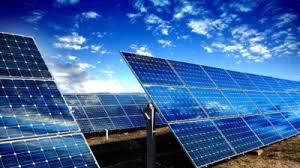Introduction
Heat Exchangers and Renewable Energy As the world shifts towards cleaner and more sustainable energy solutions, heat exchangers play a critical role in enhancing the efficiency of renewable energy systems. These devices are pivotal in optimizing the transfer of heat between different fluids or environments, allowing renewable energy systems such as solar, wind, geothermal, and biomass to operate more efficiently. Heat exchangers facilitate the capture, storage, and utilization of thermal energy, whether it’s through converting solar heat for electricity, managing temperature in wind turbines, or recovering waste heat in biomass power plants. By seamlessly integrating with renewable energy technologies, heat exchangers help reduce energy loss, improve system performance, and support a move toward carbon neutrality.
Solar Thermal Systems: In solar power plants, heat exchangers help transfer heat collected from solar panels to fluids used in heating systems or electricity generation. They are crucial in solar water heaters and concentrated solar power (CSP) systems, where thermal energy is stored for later use.
Wind Power Systems: Heat exchangers manage the cooling of wind turbine components such as generators, transformers, and power electronics. Proper cooling ensures efficiency and longevity of the turbine components while reducing operational failures.
Geothermal Energy: Geothermal power plants rely on heat exchangers to transfer heat from geothermal fluids (underground hot water or steam) to working fluids that produce electricity or provide heating. Their high efficiency in extracting heat is critical for the success of geothermal systems.
Biomass Energy: Heat exchangers in biomass plants are used to recover heat from exhaust gases during the combustion process. This recovered heat can be used to generate steam or electricity, improving the overall efficiency of the biomass power generation process.
Hydropower Cooling: In hydropower plants, heat exchangers maintain the temperature of machinery by cooling the turbines and generators, ensuring optimal performance while preventing overheating in the system.
District Heating and Cooling: Heat exchangers play a vital role in renewable district heating and cooling systems that use geothermal or solar thermal energy. They allow heat to be transferred from renewable energy sources to buildings for heating or cooling purposes, ensuring an efficient, decentralized energy supply.
Thermal Energy Storage: Heat exchangers are integral in thermal energy storage systems, which store excess heat generated by renewable sources (like solar) for later use. This stored heat can be used during periods of low energy production, balancing energy supply and demand.
Ocean Thermal Energy Conversion (OTEC): In OTEC systems, heat exchangers are used to harness the temperature difference between warm surface water and cold deep-sea water to generate electricity. Heat exchangers help transfer heat from the warm water to working fluids that drive turbines.
Hydrogen Production: Renewable energy sources like solar and wind are increasingly being used for green hydrogen production through electrolysis. Heat exchangers are vital in maintaining the thermal management of electrolyzers, ensuring optimal efficiency in hydrogen generation.
Waste Heat Recovery: In renewable energy applications such as biomass power plants or biogas facilities, heat exchangers recover waste heat from processes like combustion or fermentation. This waste heat can be reused for electricity generation or heating, further boosting the system’s overall efficiency.
Hybrid Renewable Systems: Hybrid systems that combine solar, wind, and other renewable sources often use heat exchangers to efficiently manage heat transfer between different energy production and storage components. These systems aim to maximize energy production and minimize energy loss by integrating various renewable technologies.
Biofuel Production: Heat exchangers are crucial in the biofuel production process, especially in ethanol and biodiesel plants. They optimize the heating and cooling processes involved in fermentation, distillation, and purification, ensuring efficient energy use during production.
Heat Pumps for Renewable Energy: Heat exchangers are a key component in renewable energy-driven heat pump systems, which use geothermal, solar, or ambient heat to provide heating and cooling. These systems improve energy efficiency by transferring heat between renewable energy sources and building environments.
Conclusion
The integration of heat exchangers in renewable energy systems is key to improving energy efficiency and maximizing the output of sustainable resources. By optimizing heat transfer processes and enabling effective temperature management, heat exchangers contribute to the reliability, scalability, and eco-friendliness of renewable energy projects, thus supporting global efforts toward cleaner energy solutions.

